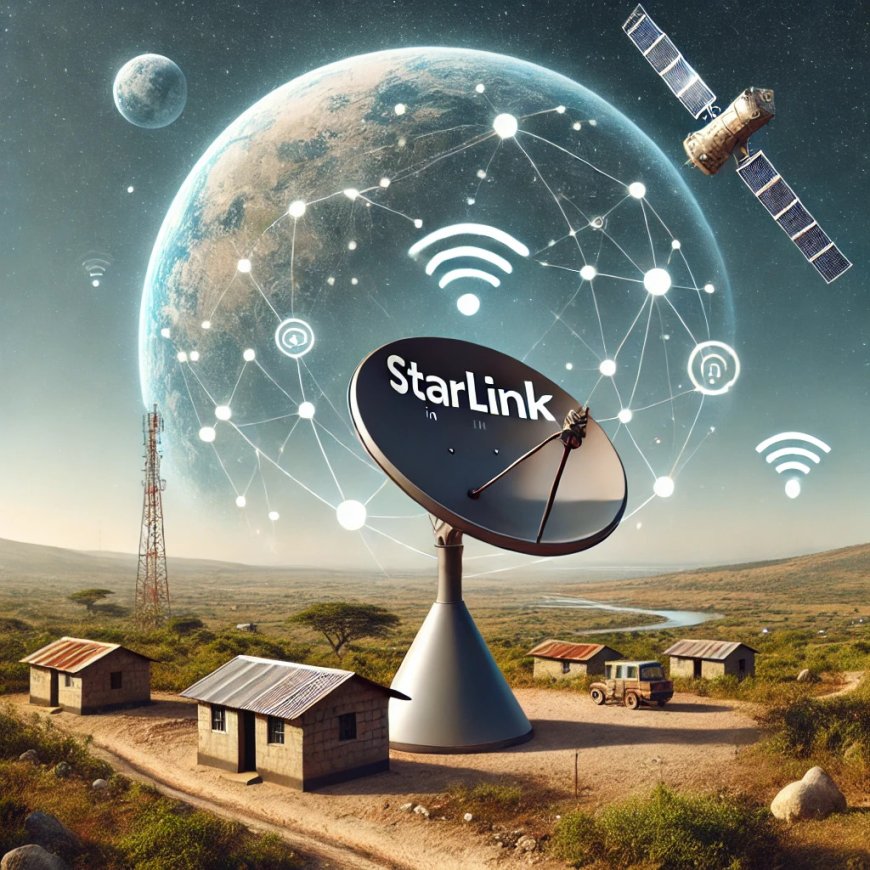Is Starlink the Future of Internet in Kenya? Exploring How It Works, Pricing, and Rental Options

The race for reliable internet service in Kenya has taken a thrilling turn with Starlink, Elon Musk’s satellite internet service, now gaining traction. Whether you're living in a rural area where traditional broadband is unreliable or simply looking for faster internet, Starlink is an option many Kenyans are curious about. But what exactly is Starlink? How does it work? What are the costs involved, and can you rent it? Let’s dive into these questions and discover how Starlink is revolutionizing the internet landscape in Kenya.
What is Starlink and How Does It Work?
Starlink is a satellite-based internet service provided by SpaceX. Unlike traditional internet providers that rely on fiber-optic cables, Starlink delivers high-speed internet through a network of satellites orbiting the Earth at low altitudes. These satellites form a mesh of interconnected devices, ensuring seamless coverage across even the most remote regions of the world, including Kenya.
The process is quite simple: Starlink’s satellites beam internet signals directly to a small dish (also known as a terminal) installed at your home or office. This dish communicates with the orbiting satellites, delivering fast and stable internet to your location. Because it bypasses the need for underground cables, Starlink has become an attractive option for rural areas and underserved locations where laying fiber-optic cables is impractical or too expensive.
Starlink Pricing in Kenya
When it comes to pricing, Starlink is a premium service, and this has been a significant point of discussion for potential users in Kenya. The cost structure typically involves two main components: the upfront cost for the hardware (which includes the satellite dish and other necessary equipment) and the monthly subscription fee for the service itself.
-
Initial Hardware Cost: To get started with Starlink, users in Kenya can expect to pay around KES 90,000 to KES 100,000 for the satellite dish and installation equipment. This is a one-time cost, but it can be a major barrier for many households and small businesses.
-
Monthly Subscription Fee: After the initial setup, Starlink’s monthly subscription fee is estimated to be around KES 12,000 to KES 15,000. This price is higher than many local internet providers, but the value is in its performance, particularly in areas where alternatives are unreliable.
While the cost is on the higher side, users report speeds between 50 Mbps and 150 Mbps, with the potential for it to go even higher as more satellites are deployed. For people who need consistent and fast internet, this could be a worthwhile investment.
Is Renting Starlink Equipment an Option in Kenya?
In some regions, there have been talks of rental options or installment payment plans for Starlink equipment, but this is still in its early stages in Kenya. As of now, there isn’t a widespread rental system for Starlink dishes in the country. However, local internet providers and resellers may soon offer such services, allowing users to pay for the equipment in smaller, more manageable installments.
There are discussions on forums and local tech communities about potential partnerships between Starlink and Kenyan internet service providers (ISPs), which could lower the cost barrier through financing or rental programs. Keep an eye on local announcements, as the demand for flexible payment options is high, especially in rural areas.
How Does Starlink Compare to Other Internet Options in Kenya?
Comparing Starlink to existing internet options in Kenya, such as fiber broadband from companies like Zuku, Safaricom, or Faiba, it becomes clear that Starlink excels in areas where traditional ISPs falter.
-
Rural Coverage: Starlink is unmatched when it comes to serving remote areas. While Zuku and Safaricom offer affordable plans in urban centers, their service can be inconsistent or unavailable in rural areas. Starlink fills this gap by offering near-global coverage.
-
Speed and Reliability: Starlink offers a reliable connection even in harsh weather conditions, a factor that can affect local fiber networks. The speeds are competitive, though some fiber networks in urban areas can offer comparable or better speeds at a lower cost.
-
Cost: This is where local providers have an edge, particularly for budget-conscious consumers. However, for those who value reliability over price, Starlink’s higher costs may be justified.
What’s the Future of Starlink in Kenya?
Starlink is still a relatively new service in Kenya, but its potential is massive. With increased demand for remote work, digital education, and access to global markets, the need for stable internet is higher than ever. Starlink provides a unique solution, especially for the estimated millions of Kenyans in rural and underserved areas who lack reliable internet options.
Moreover, as SpaceX continues to launch more satellites, we can expect Starlink’s speeds to improve, and costs may decrease as economies of scale kick in. With government initiatives aiming to bridge the digital divide, Starlink could become a crucial player in Kenya’s internet ecosystem.
Final Thoughts
Starlink has the potential to reshape how Kenyans connect to the internet, particularly in remote and underserved areas. While the pricing might not appeal to everyone, especially compared to local providers, the benefits of fast, reliable internet may outweigh the cost for those who need consistent service. Whether you’re looking to upgrade your current setup or seeking a viable option in an area where other providers fall short, Starlink is certainly worth considering.
As more information becomes available about rental options and local partnerships, it will be exciting to see how Starlink evolves in Kenya. Could it be the future of internet access? Time will tell, but the current outlook is promising.







